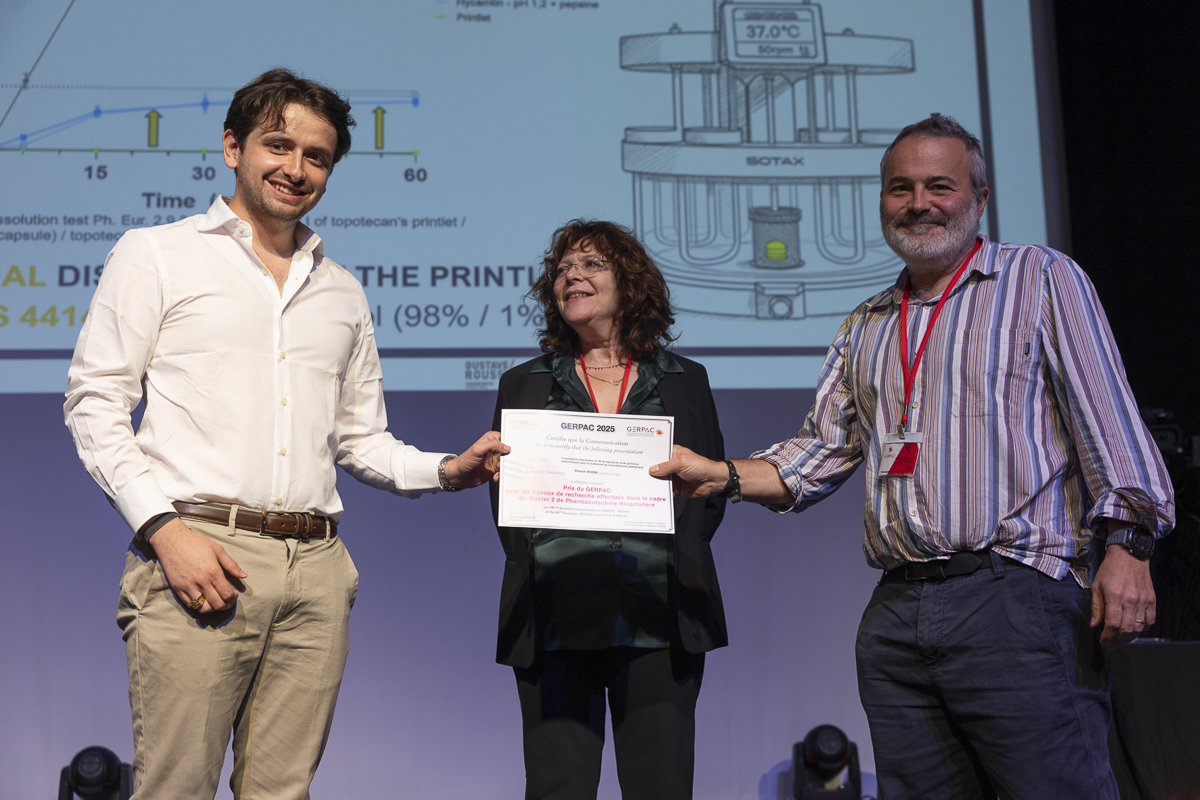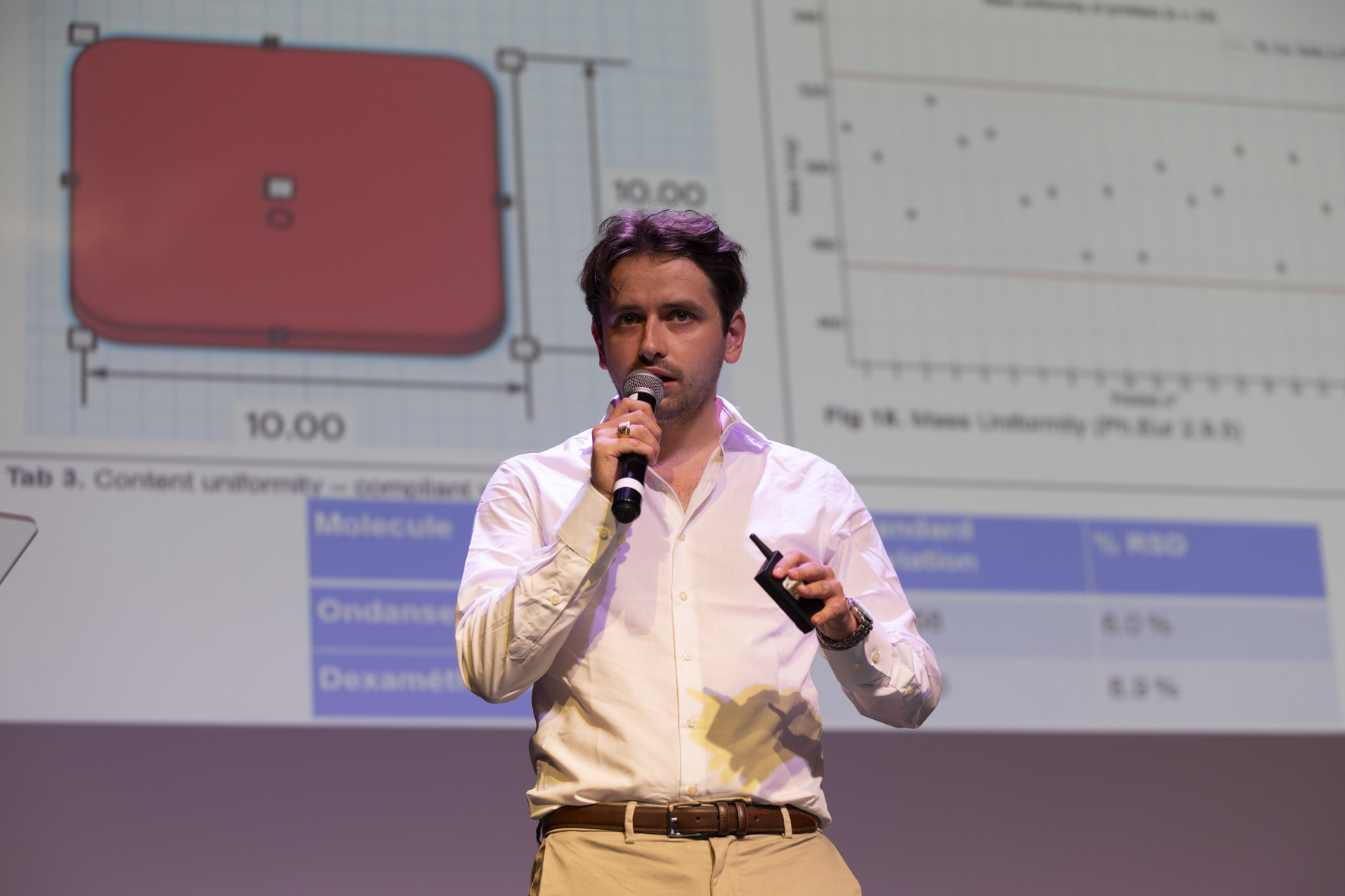3D-Printed Topotecan and Antiemetic Gummies for Pediatric Neuroblastoma
2 October 2025
R. Bodin¹, A. Rieutord¹ , F. Agnely², G. Mekhloufi², A. Bochot², M. Annereau¹, B. Do¹, L. Denis¹¹ Pharmacy Department, Gustave Roussy Cancer Campus, Villejuif, France
² Institut Galien Paris-Saclay, Université Paris-Saclay, CNRS, Orsay, France
Background
In pediatric oncology, neuroblastoma exemplifies a major unmet need: the lack of child-appropriate oral anticancer formulations and the absence of integrated supportive care. No oral pediatric formulation of topotecan exists, and no combined oral strategy with dexamethasone and ondansetron has ever been reported. This study investigated semi-solid extrusion (SSE) 3D printing as a hospital-based, on-demand technology to address these dual challenges for the first time.
Methods
A retrospective analysis of pediatric patients defined clinically relevant unit doses. Two pharma-inks were developed: a lipid-based matrix containing topotecan, and a hydrophilic matrix co-formulating dexamethasone and ondansetron. Optimization relied on rheology (frequency/amplitude sweeps, thixotropie, thermal cycling), texture analysis, and factorial Design of Experiments. Critical quality attributes were assessed according to ICH, Ph. Eur., and USP standards, including mass and content uniformity, disintegration, dissolution, water activity, microbiological quality, and stability using validated HPLC-UV with forced degradation.
Results
Dose-banding supported 1–1.5 mg topotecan units and 4 mg dexamethasone/ondansetron gummies. Printing was robust, precise, and reproducible (CV <10%), with strong correlations between theoretical and measured dose. Design of Experiments analysis for topotecan printlets (5 × 5 × 3.8 mm, anhydrous lipid matrix) confirmed nozzle gauge as the dominant factor governing dimensional precision, establishing a robust design space for reproducible manufacturing, and showed dimensional stability, uniformity of mass and content, and acceptable palatability. Their lipidic nature ensured chemical stability but limited dissolution, highlighting the need for matrix optimization. In contrast, dexamethasone/ondansetron gummies (10 × 10 × 4 mm, 8 mg/g of each drug) disintegrated within minutes in simulated saliva, achieved complete release in compendial dissolution testing. For the hydrophilic gummies, drying kinetics reduced water activity below 0.6, and microbiological testing confirmed the absence of microbial growth, ensuring stability during storage. Rheology confirmed both inks had a defined linear viscoelastic region (G’>G’’), structural integrity under thermal stress, and recovery after shear, supporting printability and resilience. Texture analysis showed mechanical resistance and palatability, supporting suitability for pediatric handling and oral use.
Conclusions
3D printing enables reproducible, hospital-ready pediatric formulations aligned with clinical dose-banding. Topotecan printlets showed stability, palatability, and geometric reproducibility, while dexamethasone/ondansetron gummies achieved rapid disintegration, complete dissolution, and microbiological safety. This dual platform demonstrates the feasibility of integrating anticancer therapy and supportive care into personalized pediatric medicines, though translation will require DSC/XRPD for stability, human palatability studies for acceptability, and PK/PD evaluations for in vivo relevance.

